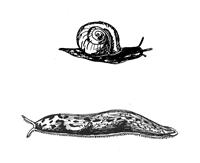 Become a Plant Doctor
Become a Plant Doctor
- Learn to identify pests, diseases and other ailments
- Learn to treat plant problems and restore health and vigour
COURSE STRUCTURE
There are ten lessons in this module, as follows:
1. Introduction
2. Overview of Preventative Controls
3. Insecticides
4. Other Pesticides
5. Spray Equipment
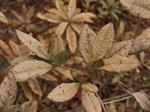 6. Insect Biology
6. Insect Biology
7. Fungal Biology
8. Environmental Problems
9. Viruses
10. Nematodes, Molluscs and Crustaceans
AIMS
- Here is just a sample of what you will learn to do in this course:
- Identify the characteristics of pests and diseases of plants.
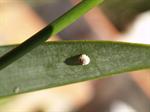 Explain methods for the control of pests and diseases.
Explain methods for the control of pests and diseases.
- Describe the characteristics of a range of different pesticides, including insecticides
- and fungicides.
- Explain the selection and use of spray equipment appropriate for different
- specified tasks.
- Describe aspects of the biology of an insect which are relevant to pest control.
- Describe aspects of the biology of an fungus which are relevant to disease control.
- Explain how inappropriate environmental conditions can affect plant health.
- Identify the characteristic signs of a range of non-insect pests,
- and select appropriate control methods.
Duration: 100 hours
WHAT THE COURSE COVERS
Here are just some of the things you will be doing:
Develop a checklist for determining the significance of pests and diseases, which addresses different criteria including:
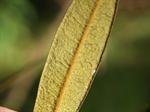 short term impact
short term impact
- long term impact
- economic impact
- aesthetic impact.
Distinguish between the main types of plant diseases, including:
Create a standard worksheet for reviewing pest and disease problems of plants.
Diagnose different problems (ie. pests or diseases), documenting the problem on a standard pest/disease review worksheet.
Describe different ways to control pests and diseases, including:
- Application of chemicals
- Plant selection
- Companion planting
- Cultural techniques (i.e. improving ventilation, improving drainage)
- Physical control (i.e. pruning, hand removal, trapping, hosing off).
Explain how plant breeding has been used to improve pest/disease resistance in different plant species.
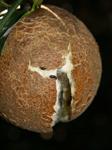 Explain three biological control methods for dealing with specific problems.
Explain three biological control methods for dealing with specific problems.
Develop an IPM strategy for a specific situation such as a crop or garden, considering: application procedures, remedial action and monitoring.
Describe plant hygiene practices for a specific situation such as a crop, nursery or garden, in line with industry practice, enterprise guidelines and sound management practice.
Recommend control methods for different pest and/or disease problems diagnosed.
List safety procedures to follow when handling pesticides.
Distinguish between the main groups of pesticides, including:
- organo-phosphates
- synthetic pyrethroids
- carbamates
- chlorinated hydrocarbons.
Explain the difference between the action of systemic and non-systemic pesticides.
Explain maintenance practices, including cleaning, for a specified sprayer.
List different uses for several types of sprayers, including a motorised pump sprayer, a knapsack and a PTO driven tractor mounted sprayer.
Compare different sprayers, in terms of:
- cost
- applications
- maintenance
- spare parts
- ease of use
- safety.
Explain the application of chemicals in a given situation, including:
- Calibration
- Mixing chemicals
- Equipment operation
- Safety measures
- Post spray procedures such as cleaning, and storage of chemicals).
Describe the minimum records which should be kept when spraying pesticides.
Prepare a labelled diagram showing the structural parts of an insect.
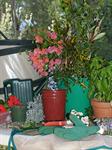 Prepare an insect collection of different insects of significance to agriculture or horticulture.
Prepare an insect collection of different insects of significance to agriculture or horticulture.
Identify to genus level, the insects collected.
Compare the structural differences between different types of insects.
Describe the lifecycle of an insect species.
Explain how an understanding of insect lifecycle can be applied to pest control.
Describe the lifecycle of a fungal disease species.
Explain the physiology of tree decay processes, including compartmentalisation.
Explain aspects of fungal biology, for different types of fungi, which are of horticultural significance, including:
- Phytophthora
- Sclerotinia rot
- Peach leaf curl (Taphrina deformens)
- Powdery Mildew
- Pythium.
List environmental problems which affect plant health and their symptoms.
Describe the affect of air pollution on different plants.
Identify nutritional deficiency symptoms in specified situations.
Develop a fertiliser program in response to a specified nutritional problem.
Distinguish between the affects of water deficiency and water excess on plant health.
Explain how to diagnose damage by various non-insect pest problems, including:
- Nematodes
- Slugs and snails
- Mites
- Millipedes
- Larger animals such as rabbits, possums or birds.
Explain how to control different non-insect pests with both chemical and non-chemical methods.
Plant Health Tips
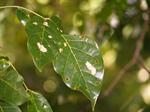 Is That Plant Really Dead?
Is That Plant Really Dead?
Plants often look like they are dead, but they might not be. Before you throw that brown-looking mass of leaves away, have a closer look. In adverse conditions, the top of a plant often dies back, leaving parts or all of the stems and foliage dead; but in fact, if conditions improve, the plant might regrow. A typical example is the maidenhair fern. If you look carefully you may see that the roots are still alive. Give it a good watering, cut back the old dead leaves, and you may soon be rewarded with lush, healthy new shoots.
Avoiding Fertiliser Problems
Young, soft plants are easily damaged by over use of fertilisers. Some guidelines are listed below:
• Beware of mixing liquid fertiliser, direct sun and young tender foliage - a bad combination.
• Watch your fertiliser concentration rates. Don’t over fertilise – twice as much fertiliser will not produce twice as much growth. Read the labels carefully and follow the manufacturer’s recommendations.
• If you’re unsure how much to use or if you’re fertilising tender plants, use safer fertilisers (eg. organic, slow release, seaweed fertilisers), rather than quick release chemicals. Alternatively only use the fertilisers at one half or less of the recommended rate initially to see what sort of response you get. It is easy to add more fertiliser if required.
• Water the soil and thoroughly before and after applying fertilisers.
• Avoid getting fertiliser on the plant foliage, unless the fertiliser is specifically recommended for foliar application.
• Slow release fertilisers, such as Osmocote & Nutricote work much faster in hot weather. Twice as much fertiliser might be released in hot weather (35oC) as in mild weather (21oC). Keep the plants well watered to avoid fertiliser burn.
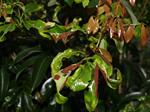
How Should I Water Plants over Summer?
Plants need more water in summer, but it is also easier to use water incorrectly at this time of year. Naturally you’ll need to water your plants more often when it’s hot but good watering involves more than turning on the sprinkler every couple of days or standing around with a hose each evening.
The do’s and don’ts of watering
- Avoid watering in the evening – although this often a pleasant activity, evening watering isn’t a good idea as it encourages fungal diseases on plants. The water droplets remain on the plants overnight, providing the perfect conditions for the spread of many common fungal diseases, including black spot on roses.
- Don’t water in the middle of the day – some foliage burns in strong sunlight if water remains on the plant. African violets, gloxinias and newly planted seedlings are particularly susceptible to foliage burn.
- Don’t spray plants lightly with water each day – the water is unlikely to penetrate down to where the roots need it. Over time, the roots will only grow in the top couple of centimetres of soil, where they are subjected to the extremes of heat and cold.
- Don’t apply water faster than it can be absorbed – it will simply run off the surface.
- Don’t waste water by using sprinklers on windy days.
- Don't position a sprinkler where the water will be sprinkled on roads, driveways, etc.
- Do water early in the morning – the water will have a chance to soak deeply into the soil before the sun gets too hot, and water on the foliage will have evaporated before the hottest part of the day reducing the risk of foliage burn.
- Do water deeply – this encourages the roots to grow downwards, giving a healthier and stronger plant. This reduces the likelihood that the plants will suffer from water stress, particularly if you are unable to water for a few days in very hot weather (e.g. if you are away on holidays).
- Do add plenty of organic matter to soils before planting. This helps improve soil structure allowing better water penetration into the soil, as well as improving the ability of the soil to hold water.
- Do use mulch – this will make a big difference to the amount of water you need to apply. Evaporation of water from the soil can be reduced by up to 70% or more. Be careful though, that you do not use too thick a layer of mulch, as the mulch can act like a sponge when you water soaking up a lot of water preventing it from reaching the soil beneath. Some mulching materials, particularly fine materials such as sawdust, can also pack down creating a barrier to water penetration. Use a mixture of coarse and fine materials, and periodically check, using your fingers, to see if the water is penetrating the mulch.
- Think about installing a drip irrigation system. Micro-jets and drippers use much less water than sprinklers and hand watering.
- Do take care when applying fertilisers dissolved in water in summer, as they are more likely to burn the foliage in hot weather.
- If you are going to use a sprinkler, use one that produces large drops rather than fines ones which are more readily blown around in the wind, and are more readily evaporated.
WHO WILL BENEFIT FROM DOING THIS COURSE?
This course builds on Horticulture I and Horticulture II it may also be taken as a stand alone course for those with good basic horticultural knowledge but needing more focussed expertise in this area. Graduates of this course will be
well versed in all aspects of plant health to complement their plant
knowledge and appreciation of general horticulture principles and
practices.
The
course is suited to people working in:
General horticulture
Garden maintenance
Parks & gardens
Garden conservation
Garden tourism
Nursery & propagation